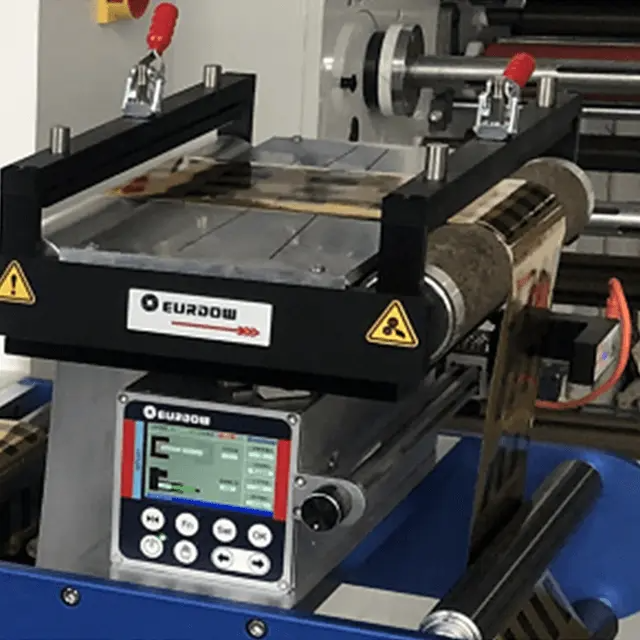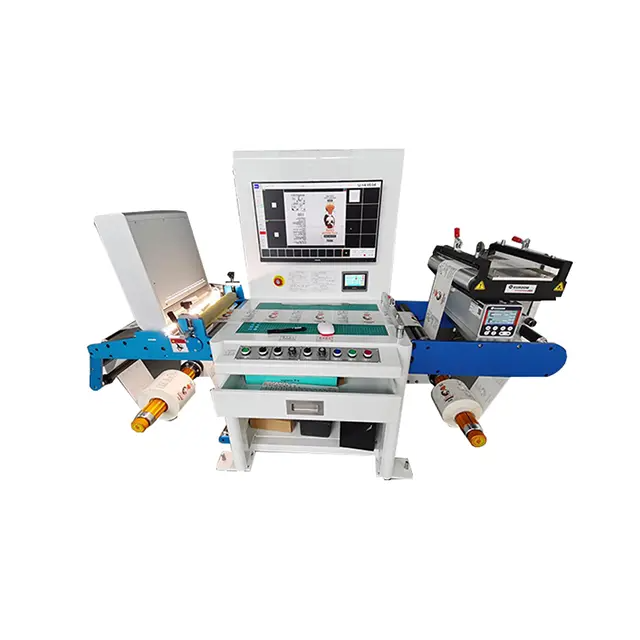Introduction
Flexographic printing, commonly known as flexo, has come a long way since its origins in the early 20th century. In recent years, technological advancements have given rise to high definition (HD) flexo printing machines, which offer superior image resolution, precise ink transfer, and unmatched consistency. These innovations cater to the ever-increasing demand for high-quality, high-volume label and packaging production across various industries—particularly where product presentation directly affects consumer perception.
Unlike traditional printing methods, HD flexo printing machines use laser-engraved plates and advanced anilox rollers to deliver vibrant images with crisp details. When combined with a label inspection machine, the printing process reaches new levels of efficiency and accuracy, ensuring that every label meets stringent quality control standards before it hits the market.
So, what exactly is a high definition flexo printing machine, and why is label inspection so vital to this process? Let’s dive deeper.
How High Definition Flexo Printing Works
The Flexo Printing Mechanism
Flexo printing uses flexible relief plates to transfer ink onto a variety of substrates, such as paper, film, foil, or non-woven materials. HD flexo machines differentiate themselves by utilizing digitally imaged plates with higher dot resolution and advanced screening technology. The result? Sharper images, smoother gradients, and more consistent color reproduction.
Key components include:
Plate Cylinder: Holds the flexographic plate that carries the image.
Anilox Roller: Controls the amount of ink delivered to the plate.
Doctor Blade: Removes excess ink from the anilox roller.
Substrate Feed System: Ensures accurate and continuous material feeding.
HD flexo printing can achieve resolutions exceeding 4000 dpi, making it an ideal solution for detailed graphics on product labels—especially when legibility and design precision are non-negotiable.
Advancements in Ink and Drying Systems
With modern HD flexo systems, water-based, UV-curable, or solvent-based inks are used depending on the substrate and end-use. The addition of LED-UV curing has drastically improved energy efficiency and print speeds. These innovations are vital for ensuring shorter lead times and higher print runs without sacrificing quality.

The Crucial Role of Label Inspection Machines in HD Flexo Printing
What Is a Label Inspection Machine?
A label inspection machine is a quality control system designed to detect and eliminate printing defects, such as color shifts, misregistration, barcode inconsistencies, and missing prints. Using high-speed cameras, image processing software, and machine learning algorithms, it automatically compares each label against a reference image or data matrix.
These systems are either inline—integrated directly into the flexo press—or offline, used as a separate quality check after printing.
Why Is Inspection Necessary?
With print speeds often exceeding 600 meters per minute, even a minor error in flexo printing can result in thousands of faulty labels within minutes. Such defects can lead to:
Label inspection machines ensure that these risks are mitigated by performing real-time analysis of every single printed label, flagging anomalies immediately. This not only reduces waste but also boosts production confidence.
Benefits of Integrating Label Inspection with HD Flexo Printing
Enhancing Print Quality
High definition flexo printing machines can only achieve their full potential when supported by robust quality control. Label inspection systems serve as the perfect companion by:
Detecting color deviations
Identifying print voids or smudging
Confirming barcode readability
Checking registration marks
This feedback loop allows press operators to make real-time adjustments, ensuring that the final output is flawless.
Improving Operational Efficiency
The synergy between HD flexo and label inspection machines dramatically reduces downtime and manual rechecks. Instead of relying on human inspection—prone to fatigue and error—the automated system ensures 24/7 reliability.
According to industry data, integrating label inspection systems can reduce production waste by up to 25% and improve throughput by 15-20%.
Applications of High Definition Flexo Printing with Label Inspection
Key Sectors Benefiting from the Technology
The combination of HD flexo printing and label inspection is especially valuable in the following industries:
| Industry | Application Examples | Inspection Relevance |
| Food & Beverage | Bottle labels, sachets, foil wraps | Detects allergen info misprints and date code errors |
| Pharmaceuticals | Blister pack labels, tamper-evident seals | Ensures barcode accuracy and legibility |
| Cosmetics & Beauty | Transparent labels, holographic finishes | Flags color inconsistencies and surface defects |
| Industrial Chemicals | Hazardous material labeling | Checks compliance with regulatory print standards |
| Retail & Apparel | Hang tags, price labels, woven fabric labels | Identifies skewed or faded prints |
These sectors demand absolute print precision, and even the smallest flaw can result in serious implications—from consumer safety risks to legal action.

Frequently Asked Questions (FAQs)
Q1: Can I retrofit a label inspection machine to my existing flexo printing system?
Yes. Many label inspection systems are modular and can be retrofitted to both modern and legacy flexo presses. This flexibility allows manufacturers to upgrade quality control processes without needing to overhaul their entire production line.
Q2: What types of defects can label inspection machines detect?
Label inspection machines can identify a wide array of issues, including:
Advanced systems can even read serialized data and verify it against a digital database in real-time.
Absolutely. With digital plate imaging and fast job changeover capabilities, HD flexo presses are now highly competitive for short and medium print runs. When paired with inspection machines, even small batches maintain a consistent quality standard.
Q4: How do I choose the right inspection system for my operation?
Key factors to consider include:
Label speed and volume
Defect detection sensitivity
Integration capability with your flexo press
Software reporting and analytics features
Compliance needs (e.g., pharma or food labeling)
Consulting with an industrial automation expert can help you find a tailor-fit solution for your specific application.
Conclusion
In today’s competitive packaging landscape, high definition flexo printing machines represent the pinnacle of print quality, while label inspection machines serve as the backbone of quality assurance. Together, they form a powerful partnership that not only meets modern branding and compliance demands but also ensures a smooth, waste-free production process.Whether you're printing intricate cosmetic labels, barcode-heavy pharmaceutical packaging, or high-volume food wrappers, combining these two technologies gives your operation the edge it needs.
Türkçe
English
العربية
Français
Русский
Español
Português
Deutsch
italiano
日本語
한국어
Nederlands
Tiếng Việt
ไทย
Polski
አማርኛ
ພາສາລາວ
ភាសាខ្មែរ
Bahasa Melayu
ဗမာစာ
தமிழ்
Filipino
Bahasa Indonesia
magyar
Română
Čeština
Монгол
қазақ
Српски
हिन्दी
فارسی
Kiswahili
Slovenčina
Slovenščina
Norsk
Svenska
українська
Ελληνικά
Suomi
Հայերեն
עברית
Latine
Dansk
اردو
Shqip
বাংলা
Hrvatski
Afrikaans
Gaeilge
Eesti keel
Māori




























